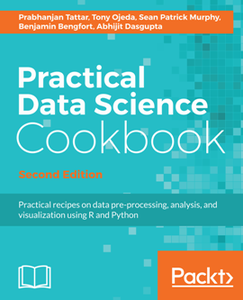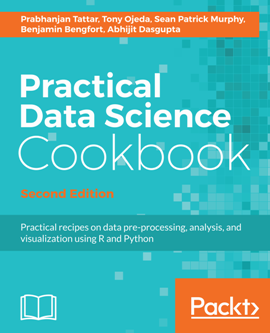Practical Data Science Cookbook - Second Edition
by Prabhanjan Tattar and Tony Ojeda
English | 2017 | ISBN: 1787129624 | 428 Pages | True PDF | 14 MB
by Prabhanjan Tattar and Tony Ojeda
English | 2017 | ISBN: 1787129624 | 428 Pages | True PDF | 14 MB
If you are an aspiring data scientist who wants to learn data science and numerical programming concepts through hands-on, real-world project examples, this is the book for you. Whether you are brand new to data science or you are a seasoned expert, you will benefit from learning about the structure of real-world data science projects and the programming examples in R and Python.
What You Will Learn:
Learn and understand the installation procedure and environment required for R and Python on various platforms
Prepare data for analysis by implement various data science concepts such as acquisition, cleaning and munging through R and Python
Build a predictive model and an exploratory model
Analyze the results of your model and create reports on the acquired data
Build various tree-based methods and Build random forest
As increasing amounts of data are generated each year, the need to analyze and create value out of it is more important than ever. Companies that know what to do with their data and how to do it well will have a competitive advantage over companies that don't. Because of this, there will be an increasing demand for people that possess both the analytical and technical abilities to extract valuable insights from data and create valuable solutions that put those insights to use.
Starting with the basics, this book covers how to set up your numerical programming environment, introduces you to the data science pipeline, and guides you through several data projects in a step-by-step format. By sequentially working through the steps in each chapter, you will quickly familiarize yourself with the process and learn how to apply it to a variety of situations with examples using the two most popular programming languages for data analysis—R and Python.



